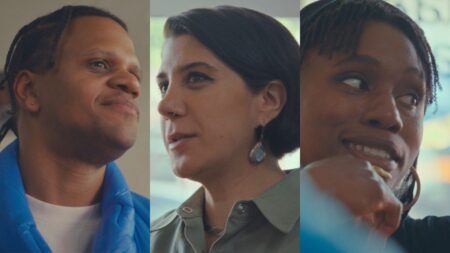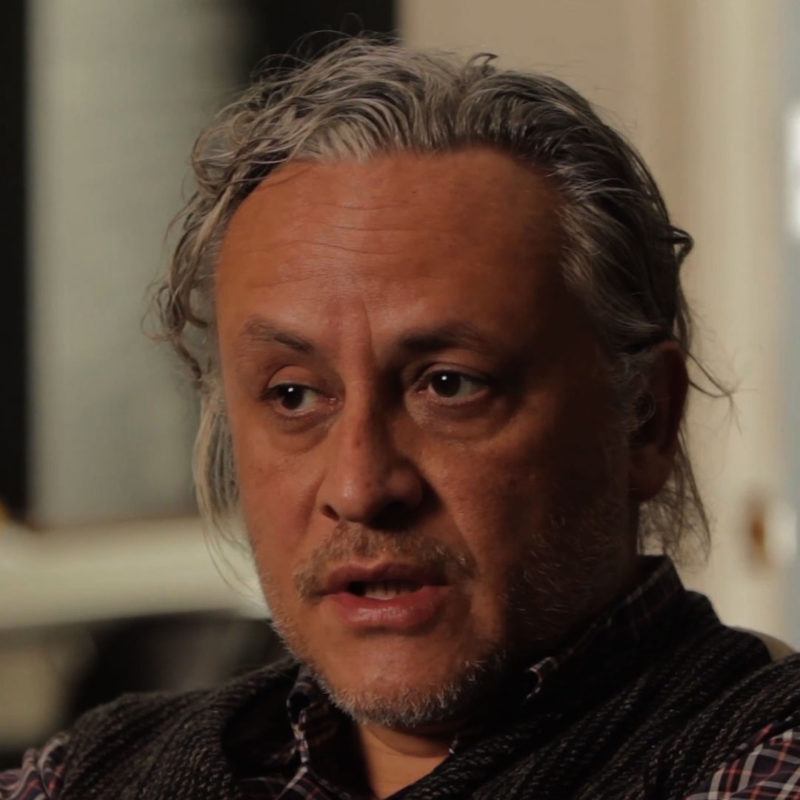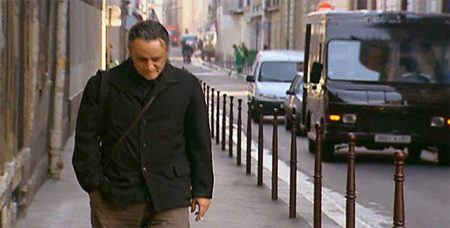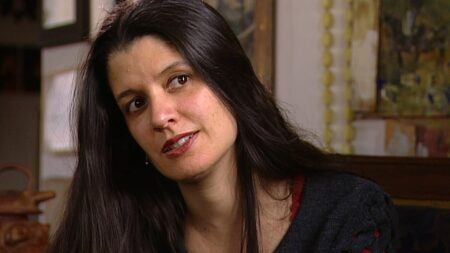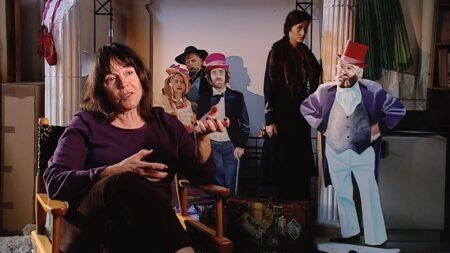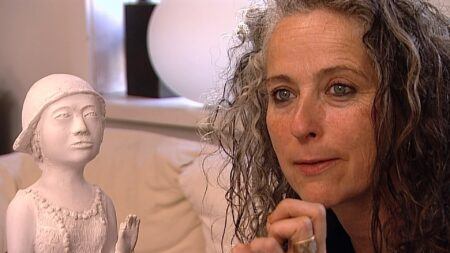Continue playing
(Time remaining: )
Play from beginning
Continue playing "{{ controller.videos[controller.getVideo(controller.currentVideo)].segmentParentTitle}}"
{{controller.videos[controller.getVideo(controller.currentVideo)].title}} has ended.
Gabriel Orozco in "Loss & Desire"
“I don’t have a studio, so I don’t have a specific place of production,” remarks Gabriel Orozco. “What happens when you don’t have a studio is that you have to be confronted with reality all the time.”
The segment follows Orozco as he creates situations with objects on the street and photographs them. Orozco’s interest in logic, systems, and physics is revealed in his series of games and in the dramatic La D.S.—a Citroën car split down the center and reassembled to elongate its shape.
“I tried to use the tools that everyone can use,” explains Orozco, commenting on his use of everyday objects and his recent series of handmade clay shapes and pots.
Credits
Created by: Susan Sollins & Susan Dowling. Executive Producer & Curator: Susan Sollins. Series Producer: Eve-Laure Moros Ortega. Associate Producer: Migs Wright. Assistant Curator: Wesley Miller. Production Manager: Alice Bertoni & Laura Recht. Production Coordinator: Kelly Shindler & Sara Simonson. Director of Education & Outreach: Jessica Hamlin. Consulting Director: Charles Atlas. Editor: Joanna Kiernan. Host Segment Artist: Charles Atlas. Host: Jane Alexander. Director of Photography: Martial Barrault, Bob Elfstrom, Mead Hunt, Ken Kobland, William Rexer, Joel Shapiro, & Dyanna Taylor. Sound: Doug Dunderdale, Jim Gallup, Judith Karp, Mark Mandler, Caleb Mose, Andre Rigaud, & Bill Wander. Gaffer/Grip: Chris Flurry, Jeff Howison, Alan Jacobsen, Michael Lamb, & Zach Zamboni. Assistant Camera: Jarred Alterman, Steve Banister, Cyril Mulon, Kipjaz Savoie, & Lieven Van Hulle. Host Make-Up: Joanne Nöél. Props: Jesus Aguilar & Sandy Handloser. Production Assistant: Eric Kutner, Guillermo Luna Rosales, Dawn Watson, & Yahia Zadek. Assistant Avid Editor: Anne Alvergue, Geoff Gruetzmacher, Jeremy Siefer, & Lynn True. Still Photography: Alice Bertoni, Bob Elfstrom, & Julie Graber.
Creative Consultant: Ed Sherin. Graphic Design & Animation: Open, New York. Animation, Visual Effects & Compositing: Spontaneous Combustion. On-Line Editor: Don Wyllie & Frame:Runner NYC. Composer: Peter Foley. Voice-Over Artist: Jace Alexander. Sound Editing: Margaret Crimmins, Greg Smith, & Dog Bark Sound. Sound Mix: Tony Volante & Soundtrack F/T. Animation Stand: Frank Ferrigno & Frame:Runner NYC.
Artworks courtesy of: Janine Antoni; Gabriel Orozco; Collier Schorr; Galerie Chantal Crousel, Paris; Luhring Augustine Gallery; Magasin 3, Stockholm; Marian Goodman Gallery; Museum of Contemporary Art San Diego; SITE Santa Fe; & 303 Gallery. Archival footage courtesy of: Juan Carlos Martín.
Special Thanks: The Art21 Board of Trustees; Rocío Barajas; Jamie Bennett; Blair Academy; Scott Cohen; Cate Ellison; The Graduate School and University Center/CUNY; Nora Kabat; Megan Laborious; La Tuilerie, Treigny; Herbert Molner; SITE Santa Fe; & West Point US Military Academy.
Interns: Sharon Ber, Elana Davidian, Eliza Geddes, Karmin Guzder, Ehren Joseph, Lisa Kalikow, Lila Kanner, Crystal Kui, Daniela Leonard, Ronny Merdinger, Parth Savla, Kristen Smith, Whitney Smith, Morgan Soloski, Jo-ey Tang, Asya Varshishky, Jesse Whittle-Utter, & Jeremy Zilar.
Public Relations: Kelly & Salerno Communications. Legal Counsel: Albert Gottesman. Bookkeeper: William Handy.
Major underwriting for Season 2 of Art in the Twenty-First Century is provided by National Endowment for the Arts, PBS, Corporation for Public Broadcasting, The Allen Foundation for the Arts, Agnes Gund and Daniel Shapiro, Bloomberg, The Jon and Mary Shirley Foundation, Nonprofit Finance Fund, JPMorgan Chase, The Andy Warhol Foundation for the Visual Arts, The Horace W. Goldsmith Foundation, New York Arts Recovery Fund, Peter Norton Family Foundation, New York Times Company Foundation, Dorothea L. Leonhart Foundation, and Elizabeth Firestone Graham Foundation.
Closed captionsAvailable in English, German, Romanian, Italian, Japanese, Korean, Chinese, Italian
Through the Art21 Translation Project, multilingual audiences from around the globe can contribute translations, making Art21 films more accessible worldwide. Translate this video now.
Interested in showing this film in an exhibition or public screening? To license this video please visit Licensing & Reproduction.
Gabriel Orozco uses the urban landscape and the everyday objects found within it to twist conventional notions of reality and engage the imagination of the viewer. Orozco’s interest in complex geometry and mapping find expression in works like the patterned human skull of Black Kites, and the curvilinear logic of Oval Billiard Table. He considers philosophical problems, such as the concept of infinity, and evokes them in humble moments. Matching his passion for political engagement with the poetry of chance encounters, Orozco’s photographs, sculptures, and installations propose a distinctive model for the ways in which artists can affect the world with their work.
“I don’t have a studio, so I don’t have a specific place of production.
What happens when you don’t have a studio is that you have to be confronted with reality all the time.”
Gabriel Orozco
